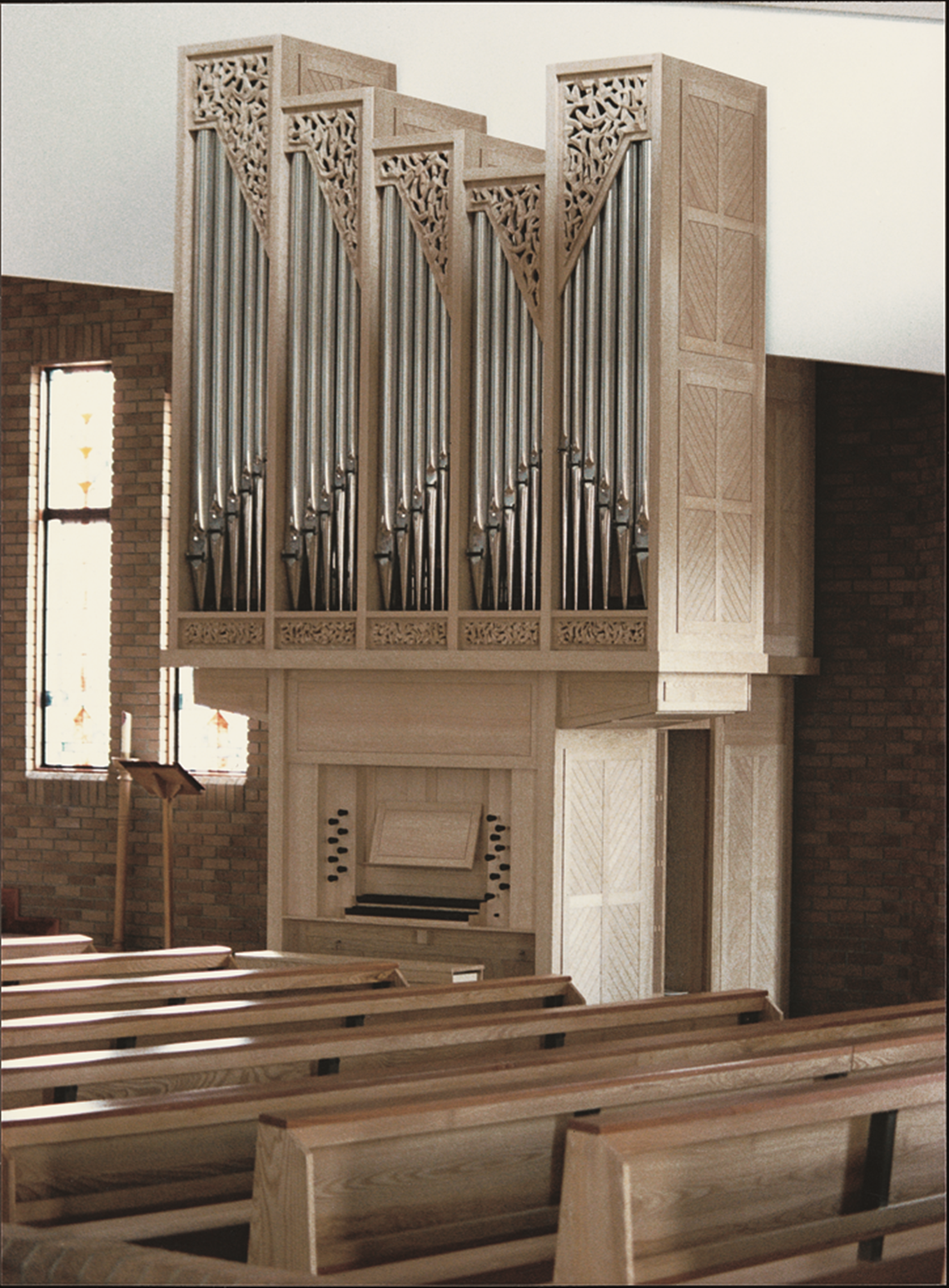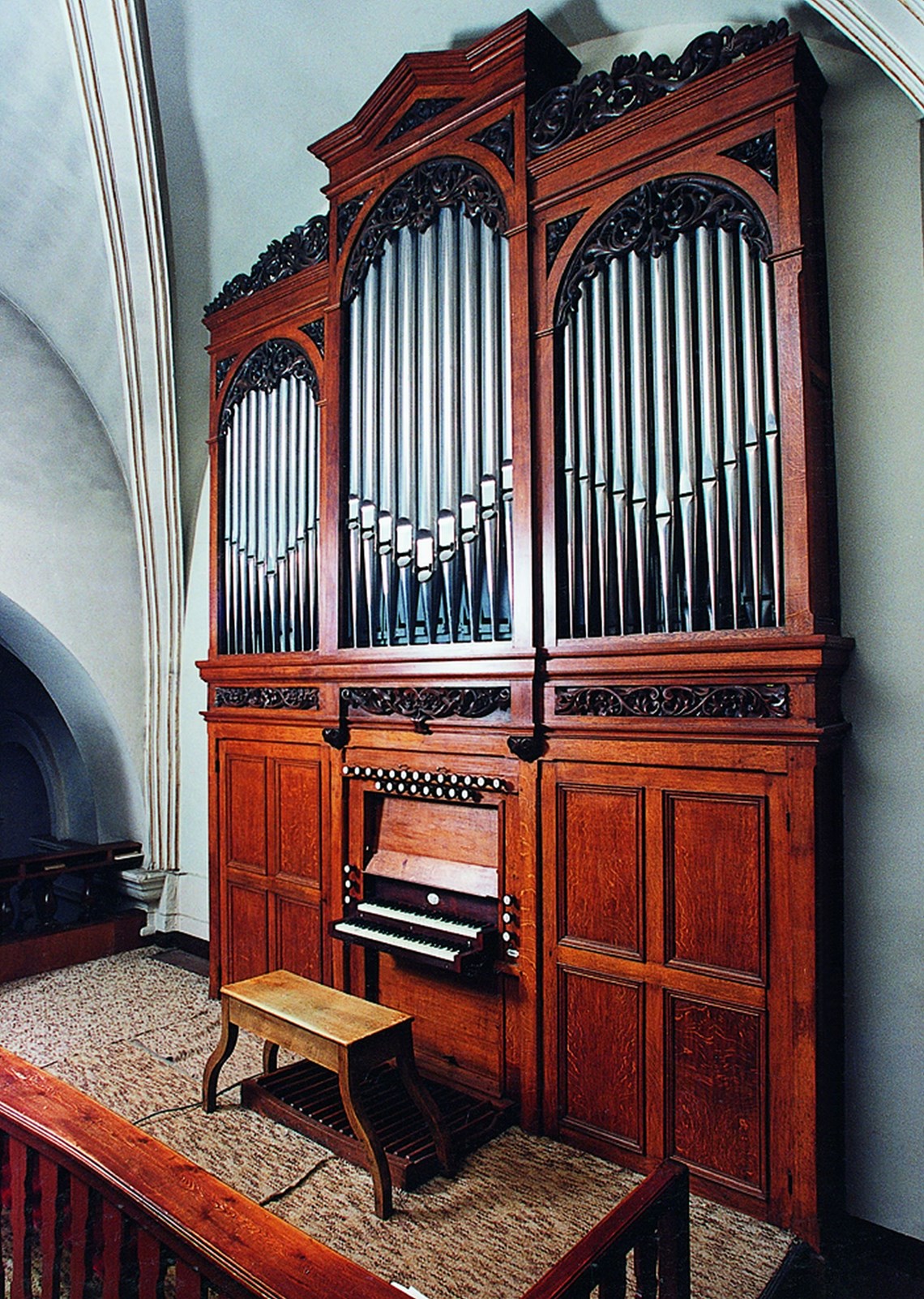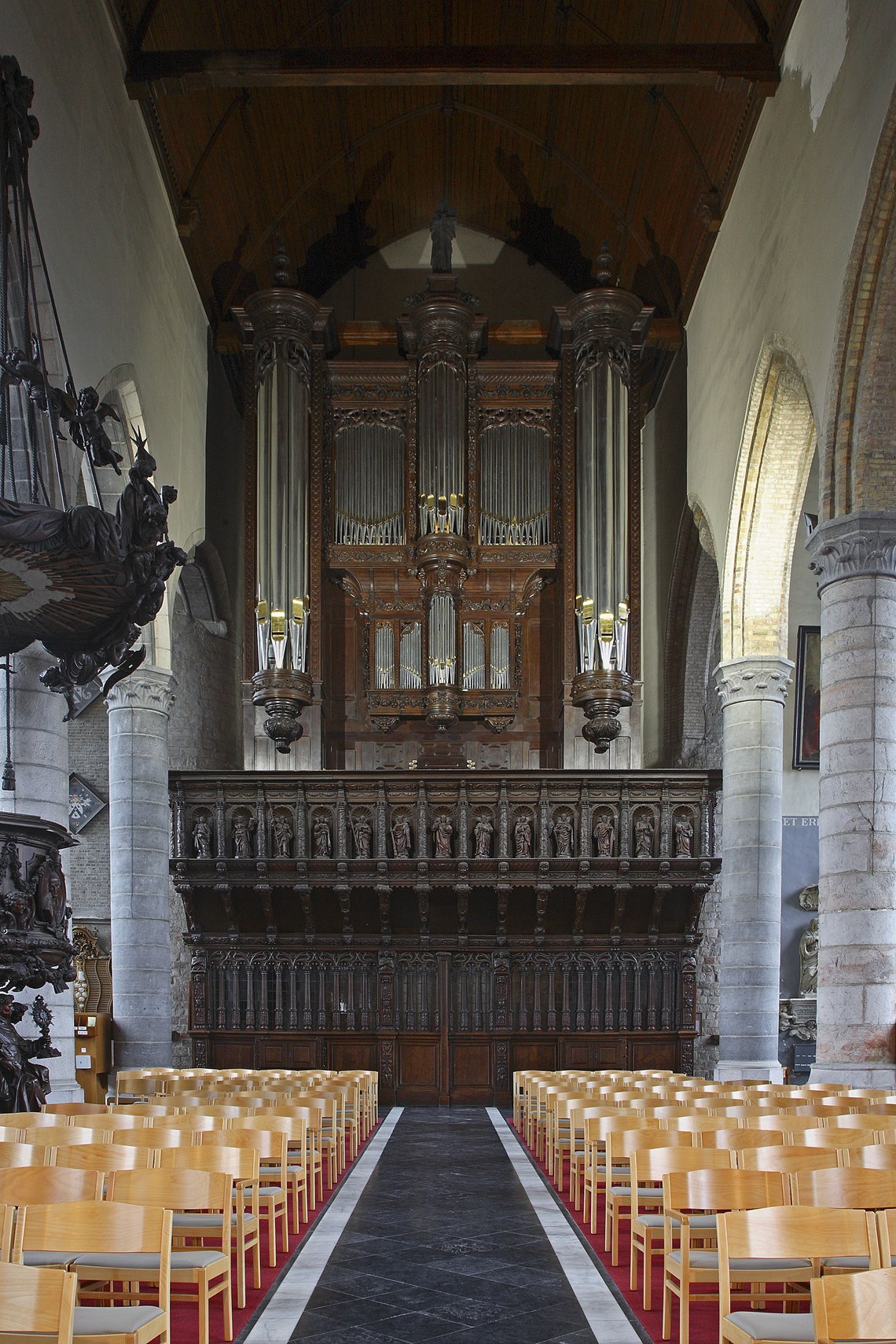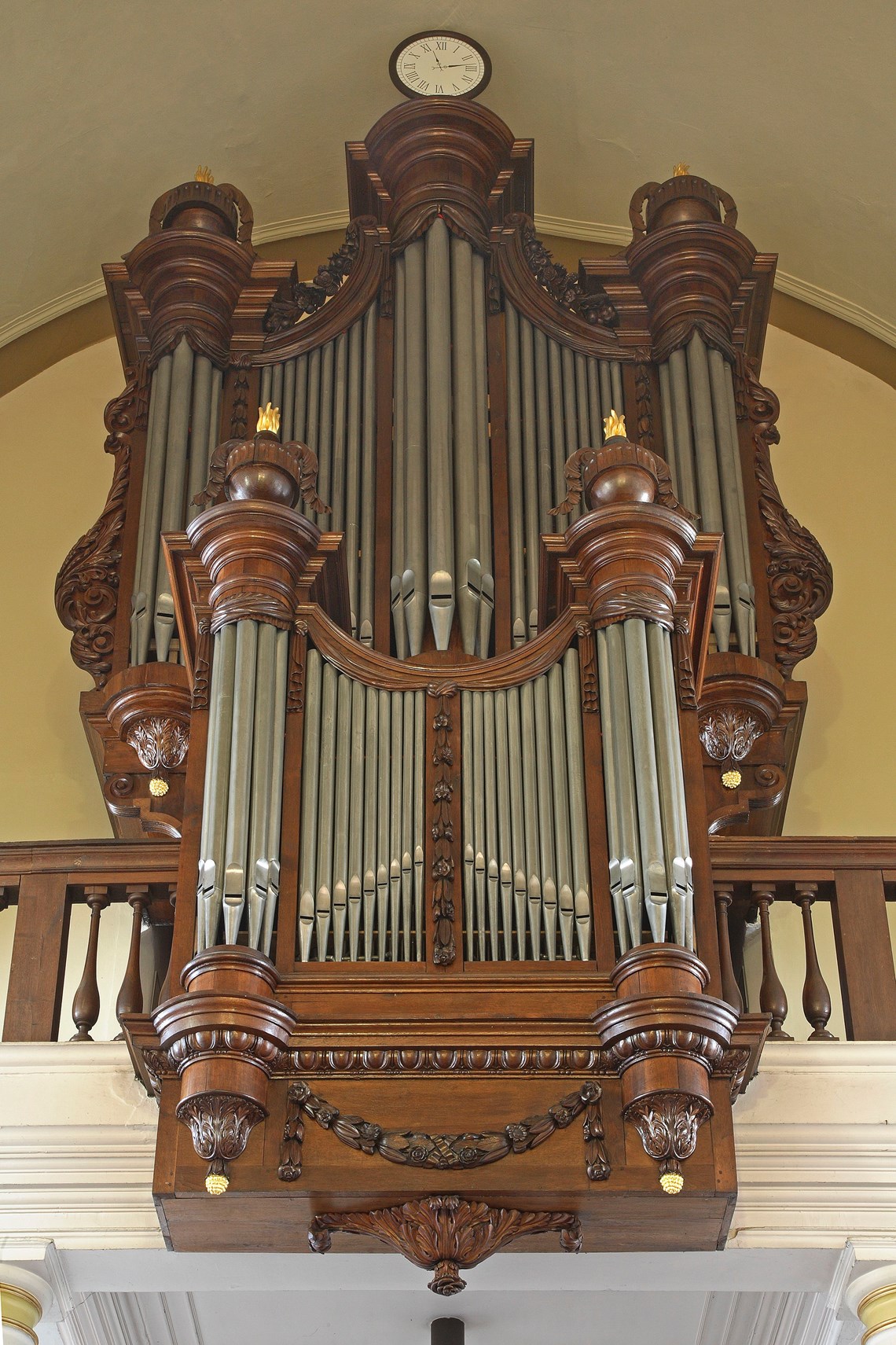Our history

After his carpenter training, Stephan Schumacher (º 1923, † 2002) first worked as a cabinet maker in the workshop of Leon Müllender, his future father-in-law, in Eupen. In 1948 he decided to become organ builder and first worked five years with Haupt in Lintgen (Luxembourg), then a few months with Stahlhut in Aachen (Germany), followed by three and a half years with Verschueren in Tongeren (Belgium).
From the beginning he showed a lively inventiveness that characterized him throughout his life. His first invention was a new stop of wooden flue pipes with a particularly rich and round sound thanks to their bulbous quadrant shape. Its first version can be found in his native town Bütgenbach.
At the end of 1956 he decided to start his own business and settled in his father-in-law's workshop on Werthplatz 54 in Eupen. He initially worked closely with Nikolaus Loewen from Luxembourg and was instrumental to the design and implementation of the organs in Elvange, Bettembourg and Stadtbredimus.
His first own instruments, still with electric action, were built in the late fifties and early sixties in Belgium, in Tubize, Gottignies and Grüfflingen. They were actually delivered under the Leon Müllender name.
From the mid-sixties he followed the evolution of modern organ building in Belgium and its return to the mechanical slider chest organ. Subsequently Stephan Schumacher developed a long series of small instruments, partly at the suggestion of Professor Hubert Schoonbroodt, with whom he developed a long friendship.
He built his first mechanichal church organs of some importance in 1966 in Saint-Nicolas near Liège and in 1967 in Schönberg, where he applied another invention, the so-called "Stülpdichtungen".
Larger orders followed for the parish churches of the Assumption of Mary in Kelmis, the Sacred Heart in Schoten, Saint John in Wilrijk and Saint John the Baptist in Remicourt. He built his most important organ with 40 stops over 3 manuals for the parish church of Saint Vith.


Numerous small organs were built for the Benelux countries, Germany and France, in particular chest organs, portatives and study organs for private individuals and music schools. Another part of the activity was the construction of sophisticated house organs for experienced organists, sometimes modern, sometimes baroque inspired.


Another of his inventions, the telescopic sleeves, were being sold worldwide.

Guido Schumacher (º 1957) studied organ at the Liège Royal Music Conservatory and completed his art history and musicology studies at the University of Liège "maxima cum laude" for his thesis "Organ Building in Liège in the 18th Century – The Le Picard and Robustelly Dynasty".
In 1981 he joins his father's business, becomes co-manager at the conversion into "Organbuilding Schumacher, Ltd." and becomes manager at the resignation of Stephan Schumacher in 1988.
But his interest was not limited solely to contemporary organ building and modern materials. He was also interested in more unusual and extraordinary instruments like regals. Based on an old engraving preserved in the Germanisches Nationalmuseum in Nuremberg, he designed his "Terracotta Regal" with resonators made in terracotta.



At about that time initial contacts were established with Great Britain and shortly thereafter Ireland, with now 14 Schumacher organs there, among them in the catholic Saint Mary's Cathedral in Middlesbrough in northern England.

The restoration of historic organs now becomes an additional activity. The restoration of the Pereboom & Leijser organ at the Saint Brice parish church in Hombourg marks the beginning of a long series of around 40 restorations of mainly protected cultural heritage instruments.

The first major organ built under the direction of Guido Schumacher stands in Saint Peter's Church in Bastogne and contains 40 stops on 3 manuals and pedal.
The lack of space at the workshop in Werthplatz 54 in Eupen was becoming a major obstancle to the company's development and after 35 years' existence it moved to the neighbouring Baelen to almost triple its work area of approximately 400 m² to 1,100 m². Already in 1994 a large wooden assembly hall was added and a hitherto missing pipe shop installed in 1995. This was made possible by the purchase of the pipe shop of the Stahlhut company in Aachen (Germany) and a little later of the pipe shop tools the Busch/Steffani/Gülke company from Roermond (Netherlands).





Some important contacts arre made with Japan and in 1993, as part of a major cultural exchange project, a concert organ is built at the Sun City Hall in Itami as counterpart to the "Japanese guarden" installed in the Flemish partner city Hasselt.


The subsequent years were marked by the reconstruction of some large landmark heritage instruments, like the "renaissance organ" in Saint James' Church in Liège, the on the Middle-German baroque inspired organ in Our Lady's Church in Sint-Truiden, the Rhenish-Mosan Binvignat organ from 1793 in the cathedral of Hasselt and the Flemish baroque Van Belle/Van Petegem organ in Saint Bertin's Church in Poperinge.



Modern organ cases are obviously also very important in the workshop's creations. The organ built in 2010 for Saint Martin's Church in Genk is a nice example. The curly shapes are a contemporary interpretation of the baroque language, which is also reflected in the specification.
In the development of Organ Building Schumacher, 2011 is a new important milestone: another removal and return to Eupen, into a modern and spacious workshop of 2,100 m², idyllically located on the edge of the forest and along a small river. The technical equipment is further enhanced by the acquisition of new machinery and all workspaces grow significantly. In addition the external deposits can now be brought together in one place.



Many distinguished guests were present at the grand opening of the new worskhop, including a delegation from Estania that came to admire the new organ being built for the Methodist church in Tallinn, the "Hugo Lepnurm-Memorial Organ".
Some other important restoration projects follow in Our Lady's Church in Sint-Niklaas, Saint Brigit in Koersel, Saint Charles Borromeus in Antwerp and the highly acclaimed completion of the restoration of the Merklin/Schyven organ in Saint Bartholomew's Church in Liège.



With a team of 14 employees, Organ Building Schumacher becomes the largest organ building company in Belgium and in September 2014 the prestigious restoration starts of the monumental 4 manuals 90 stops Schyven-organ in the Antwerp cathedral.

